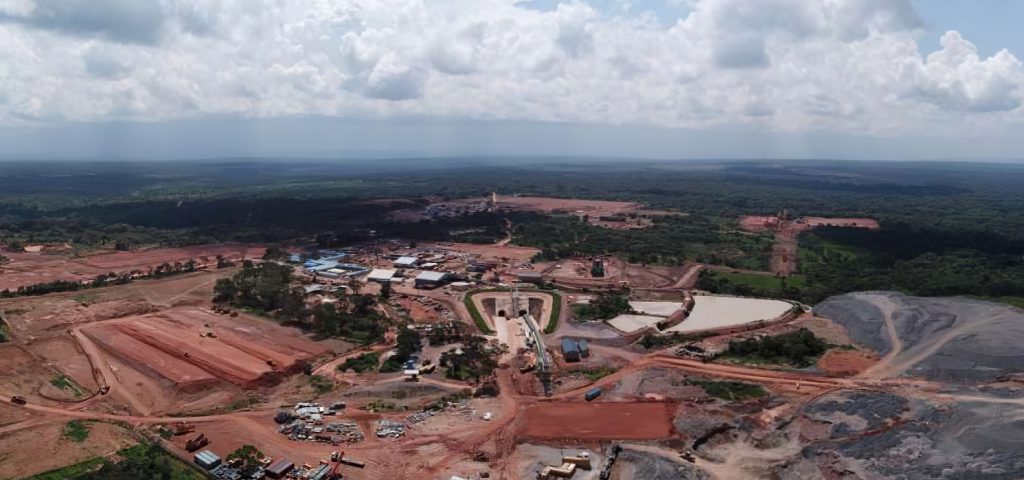Ivanhoe mines record 400,000 tonnes of 5.36% copper in March at Kamoa-Kakula

Ivanhoe Mines Ltd.‘s [IVN-TSX; IVPAF-OTCQX] reports that underground ore production at the Kamoa-Kakula copper project in the Democratic Republic of the Congo (DRC) mined and stockpiled a record 400,000 tonnes of ore grading 5.36% copper from the Kakula and Kansoko mines in March. This tonnage was 18% higher than the 339,000 tonnes mined and stockpiled in February.
The 400,000 tonnes mined in March comprised 364,100 tonnes grading 5.52% copper from the Kakula Mine, including 100,000 tonnes grading 8.70% copper from the mine’s high-grade centre, and 36,000 tonnes grading 3.78% copper from the Kansoko Mine.
The project’s pre-production surface stockpiles now contain approximately 2.56 million tonnes of high-grade and medium-grade ore at an estimated blended average of 4.60% copper. Contained copper in the stockpiles increased by approximately 21,500 tonnes in March – to a cumulative total of more than 117,000 tonnes (the current copper price is approximately US$9,100 a tonne).
Kamoa-Kakula is on track to substantially exceed the 3 million tonnes of high-grade and medium-grade stockpiled ore, holding more than 125,000 tonnes of contained copper, that the 2020 pre-feasibility study projected would be stockpiled prior to the planned start of processing in July 2021.
Kamoa-Kakula also set a fresh monthly mine development record in March, with an advancement of more than 3,100 metres, bringing total underground development to approximately 38.6 km – around 13.5 km ahead of schedule.
Mark Farren, Kamoa Copper’s CEO, commented: “The outstanding mining rate in March was driven by improved crew efficiencies and a higher percentage of ore coming from drift-and-fill stoping operations. We are comfortable with the mining performance as we move into final commissioning of the Phase 1, 3.8-Mtpa concentrator plant. If we consistently mine at around 400,000 tonnes per month, we will continue to add to the surface stockpiles ahead of our Phase 2, 7.6 Mtpa concentrator plant commissioning, which is expected in Q3 2022. The large surface ore stockpiles will give us considerable flexibility during the ramp up of Phase 2 production.”
Robert Friedland, founder and executive co-chairman, added: “It is extremely encouraging to see how much better the project’s actual mining performance has been compared to the projections presented in the 2020 independent definitive feasibility and pre-feasibility studies. This is a testament to the determination and resilience of our on-site team that has worked tirelessly over the last year to deliver the first phase of this massive project on time and on budget, despite the challenges posed by COVID-19. As we continue to ramp-up underground operations at the Kakula and Kansoko mines, and expand the processing facilities, our primary focus remains on the health, safety and well-being of our employees and contractors.
“The proceeds from our recently completed US$575 million, 2.50% convertible senior note financing opens the distinct possibility of earlier development of Kamoa-Kakula’s Phase 3 expansion to 11.4 Mtpa, which would bring copper production at the Tier One copper mine to approximately 530,000 tonnes, or approximately 1.2 billion pounds per year. The funding also allows us to quickly expand our exploration program on our Western Foreland licences adjoining Kamoa-Kakula, in pursuit of our next world-scale copper discovery.”
Phase 1 copper production from the Kakula Mine is scheduled to begin in July 2021. Kakula is projected to be the world’s highest-grade major copper mine, with an initial mining rate of 3.8 Mtpa at an estimated early average feed grade of more than 6% copper, ramping up to 7.6 Mtpa in Q3 2022.
Phases 1 and 2 combined are forecast to produce up to approximately 400,000 tonnes of copper per year. Based on independent benchmarking, the project’s phased expansion scenario to 19 Mtpa would position Kamoa-Kakula as the world’s second-largest copper mining complex, with peak annual copper production of more than 800,000 tonnes.
-30-
